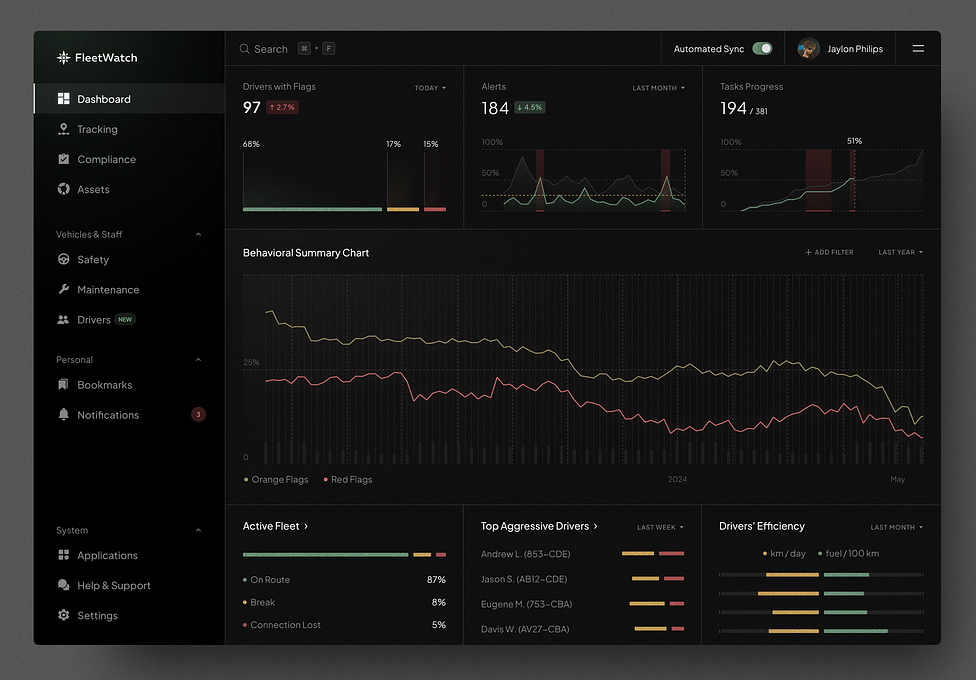Just starting your journey in iOS app development? You might find yourself grappling with a myriad of programming languages, frameworks, and tools that seem to multiply every year. The pressure to stay updated can be overwhelming, especially with the rapid evolution of technology and user expectations.
Contents:
If, for example, you’re battling with Swift’s nuances, understanding the core programming languages can make a world of difference in your development process.
In this article, we picked the 5 iOS programming languages that are in demand among modern developers. Each language brings its unique strengths to the table, equipping you with the keys to unlock new possibilities and enhance your skill set. Explore how mastering these languages can help you streamline your workflow, create more efficient code, and ultimately make your apps stand out in a crowded marketplace.
Why Choose iOS for App Development?
Choosing the right platform can set the trajectory for your career, and iOS development offers an array of compelling reasons for newcomers.
There are over 2 million iOS applications accessible in the Apple Store for more than 1.5 billion Apple devices globally. Companies need lots of developers to maintain these apps. Statistics support this fact and forecast a 25% growth in demand for software developers, including iOS developers, between 2022 and 2032. This projection amounts to 451,200 new job possibilities throughout that period. Also, the average annual base salary of an iOS engineer in the US is $108,990.
Here are a few more reasons why you should consider studying an iOS development programming language:
- User-Friendly Development Environment:
Apple provides a robust and user-friendly development environment through Xcode, its official IDE. With rich documentation, tutorials, and resources, you as a beginner can quickly learn the ropes and start building applications without feeling overwhelmed.
- Strong Community Support:
The iOS developer community is vast and welcoming. You can easily find support, mentorship, and collaboration opportunities through forums, online courses, and local meetups. Moreover, engaging with the community can lead to valuable connections, insights, and career growth.
- Innovation and Quality:
Apple strongly emphasizes user experience and quality, encouraging developers to produce polished applications. By developing for iOS, you learn best practices in app design and functionality that can serve you well in any development endeavor.
- Portfolio Building Potential:
Creating apps for iOS allows you to build a substantial portfolio that showcases your skills to potential employers. Unique and innovative projects can demonstrate your creativity and technical know-how, making you a more attractive candidate in the job market.

Telematics Company SaaS Dashboard by Shakuro
6 Best iOS Coding Languages for App Development
What programming language are iOS apps written in? There are several options but here are six popular languages you can leverage to your advantage:
Swift
It is a powerful and intuitive programming language developed by Apple for iOS, macOS, watchOS, and tvOS app development. Introduced in 2014, it has quickly become the go-to language for developers due to its efficiency and ease of use. Its safety features, performance capabilities, and user-friendly syntax make it an attractive option for developers of all skill levels.
Advantages
- Swift’s syntax is designed to be clear and expressive, making it easier for developers to write and read code. It incorporates modern programming concepts such as closures or generics, enhancing productivity and reducing the likelihood of errors.
- It is focused on safety. Swift’s type system helps prevent common programming errors. Additionally, Swift is optimized for performance, making apps faster and more responsive.
- This iOS app programming language is compatible with Objective-C, allowing you to seamlessly integrate Swift code into existing projects. The feature is particularly beneficial for teams transitioning from older codebases, as they can gradually adopt Swift without rewriting their entire application.
- It has a growing community of developers who contribute to its ecosystem. This means an abundance of resources, open-source libraries, tutorials, and forums to help you learn and solve problems as you develop iOS applications.
- Apple is committed to the growth of Swift, with regular updates that introduce new features and improvements. This ensures that developers have access to the latest advancements in programming techniques, keeping their skills and applications up-to-date.
- Swift’s clean and simple syntax makes it an ideal choice for beginners in app development. With a wealth of educational resources available—from Apple’s official documentation to numerous online courses—junior developers can quickly get up to speed and start building their apps.
Objective-C
Objective-C is a general-purpose, object-oriented programming language that has been used primarily for macOS and iOS development since the early 1980s. As a superset of the C language, it adds Smalltalk-style messaging to the C programming language, making it a foundational language for Apple’s software ecosystem.
Although newer languages like Swift are preferred for most new projects, understanding Objective-C remains beneficial for working with legacy code and maintaining older applications. Its deep integration with Apple frameworks and dynamic features make it a powerful language for certain use cases. Learning this iOS app programming language expands your skill set and provides invaluable insights into the evolution of iOS development.
Advantages
- Objective-C has a long history within Apple’s development environments. Many of the frameworks and libraries used in iOS development are built with Objective-C, which means that existing resources and tools can be leveraged effectively.
- The syntax may seem verbose compared to newer languages like Swift. It uses brackets for method calls and has a unique messaging syntax, which can confuse newbies. However, once mastered, it leads to powerful and flexible coding paradigms.
- Dynamic runtime allows developers to make decisions at runtime rather than at compile time, enabling dynamic object creation, method swizzling, and more, which can be powerful for certain applications.
- Objective-C is fully compatible with Swift. This interoperability allows you to incorporate existing Objective-C code into new Swift projects and vice versa, providing a flexible transition path for teams adapting their codebases.
- Being a well-established language, it has a large legacy codebase. You can use many older applications, libraries, and resources. Objective-C still has an active community, with plenty of resources for learning and troubleshooting.
- For new developers, this iOS programming language can pose a steeper learning curve due to its syntax and concepts. Understanding message passing and memory management (especially using reference counting) is crucial but can be rewarding, offering a comprehensive foundation in programming concepts.

Rental App Design Concept by Shakuro
C#
It is a modern, object-oriented programming language developed by Microsoft. It is widely used in various applications, from the web to game development with Unity. With the introduction of Xamarin, C# has also become a viable option for developing iOS applications.
C# is a powerful option for iOS app development, especially for developers already familiar with the .NET ecosystem. With Xamarin, this iOS app programming language enables cross-platform development while providing access to native APIs and a rich library of UI components. Although there can be performance trade-offs compared to native development, the benefits of code reuse and rapid development can be significant.
Advantages
- Xamarin is a powerful framework that allows developers to write applications for iOS, Android, and Windows using C#. It provides a single codebase, enabling faster development and easier maintenance across multiple platforms. You can utilize .NET libraries and frameworks, streamlining the development process.
- The framework provides full access to native APIs, meaning you can utilize the full range of iOS features, including UI components, gestures, and device capabilities. This access allows developers to create apps that maintain a native look and feel while being written in C#.
- Xamarin.Forms is a powerful UI toolkit within the Xamarin ecosystem that allows developers to create user interfaces using XAML. This framework supports a wide range of controls that work seamlessly on both iOS and Android, making it easier to design cross-platform apps without sacrificing performance or usability.
- The C# community is robust, with a wealth of resources available for developers. Microsoft actively supports the language, and its integration with Visual Studio provides a smooth development experience, complete with debugging tools, code analysis, and performance profiling.
- C# is known for its modern programming language features, such as async/await for asynchronous programming, LINQ for query capabilities, and strong typing. These features can enhance the development experience, making code more efficient and easier to maintain.
Dart + Flutter
Dart is a modern, client-optimized programming language developed by Google. It is designed for building mobile, desktop, server, and web applications. Dart’s syntax is easy to learn, especially for developers familiar with languages like Java or JavaScript.
Flutter is an open-source UI toolkit created by Google that allows developers to build natively compiled applications for mobile, web, and desktop from a single codebase. It uses Dart as its primary programming language and is particularly popular for iOS and Android app development.
Dart combined with Flutter presents a compelling option for iOS app development. With its modern language features, easy-to-use UI toolkit, and exceptional performance, this duo enables developers to create stunning, high-performance applications efficiently.
Advantages
- One of Flutter’s standout features is “Hot Reload,” which allows developers to see changes in the code almost instantly reflected in the app. This significantly speeds up the development process and enhances productivity, making iterative design and debugging easier.
- The iOS development programming language comes with a rich set of pre-designed widgets that follow Material Design for Android and Cupertino for iOS. This allows developers to create visually appealing and highly interactive user interfaces that look and feel native on each platform.
- Flutter compiles native ARM code using Dart, allowing applications to run with high performance on both iOS and Android. It leverages the Skia graphics engine, which enables smooth animations and graphics rendering, achieving a native performance feel across devices.
- You can write a single codebase that targets multiple platforms, significantly reducing development time and effort. This also simplifies maintenance since any updates or bug fixes only need to be applied once.
- Flutter has rapidly gained popularity, creating a vibrant community and ecosystem. There are numerous packages and plugins available, making it easy to extend app functionalities and integrate with third-party services.
- Flutter’s ecosystem provides several state management solutions, such as Provider, Riverpod, and BLoC (Business Logic Component). These tools help manage the app’s state effectively, enabling developers to maintain clean and maintainable code.
React Native
React Native is an open-source framework developed by Facebook that allows developers to build mobile applications using JavaScript and React. It enables the creation of natively rendering apps for iOS and Android using a single codebase, emphasizing the reuse of code across platforms.
With its ability to create performant apps that feel native, rapid development capabilities, and strong community backing, React Native is a strong contender in the cross-platform development space. Its advantages in code reusability and rapid prototyping make it a preferred choice for many teams looking to develop mobile applications efficiently.
Advantages
- The iOS programming language leverages JavaScript, one of the most widely used programming languages, and React, a popular library for building user interfaces. This familiarity is beneficial for many developers, making the transition to mobile development smoother.
- React Native uses native components, which means that the application’s UI behaves like a native app. It converts React components to platform-specific components, allowing for a seamless user experience. This gives React Native applications a look and feel that is consistent with other native applications.
- One of the key features of React Native is “Hot Reloading,” which allows developers to instantly see the effects of changes in the code without losing the current state of the application. This feature accelerates the development cycle, making debugging and iteration more efficient.
- React Native supports a wide range of third-party plugins and libraries. This flexibility allows developers to extend app functionality easily and integrate with various services, thereby reducing development time and effort.
- Being an open-source project, React Native benefits from a robust community of developers who constantly contribute to its growth. The wealth of resources, tutorials, and open-source libraries available through community efforts can significantly aid development.
- One of the main advantages of React Native is the ability to share most of the code between iOS and Android platforms. This reduces the workload for developers and streamlines the maintenance process, as shared components can be updated once and be reflected in both versions.
- React Native allows for rapid prototyping and quick iterations, making it an ideal choice for startups and projects needing to validate concepts quickly. The ability to develop with a focus on UI and UX enhances the speed at which products can be brought to market.

Crypto App Design Concept by Conceptzilla
Java
Java is a high-level, object-oriented programming language developed by Sun Microsystems, now owned by Oracle. While traditionally associated with Android development, developers sometimes consider it for iOS app development through specific frameworks and tools.
They can use frameworks like Codename One or J2ObjC that allow Java code to be translated into native iOS applications. Codename One provides a set of tools for creating cross-platform apps while J2ObjC converts Java code to Objective-C.
Advantages
- Using frameworks like Codename One or frameworks based on Apache Cordova, developers can write the application in Java and deploy it on both iOS and Android platforms. This approach emphasizes code reusability and reduces development time across multiple platforms.
- Java is a well-established and mature programming language with extensive documentation and community support.
- This iOS app programming language offers numerous existing libraries, making it easier for you to implement various functionalities.
- Many developers are already familiar with Java, especially those from an enterprise or Android development background. So it might be easier for you to get started.
Importance of Choosing the Right Programming Language for iOS Development
The right programming language significantly impacts the performance of an iOS application.
Different tools provide varying levels of access to iOS native features. Swift and Objective-C are fully supported by Apple, enabling you to access the latest APIs and frameworks like UIKit, Core Data, and SwiftUI seamlessly. Choosing a language that integrates well with the iOS ecosystem ensures that you can utilize all features effectively.
If there’s a plan for cross-platform development, this may influence the choice of language. For example, C# offers Xamarin for code sharing between iOS and Android. However, if the focus is solely on iOS, using Swift ensures full optimization for Apple devices.
As technology advances, being strategic in language selection ensures a more efficient development process and results in high-quality applications that meet user needs.
Do you need to build a robust iOS application for your next project? Reach out to us and let’s work together to create a functional app.

